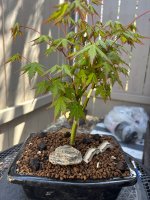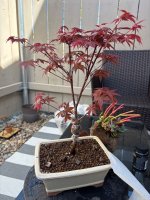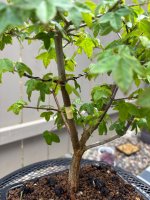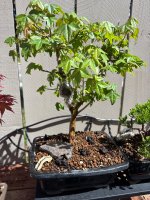shirleytheviola
Seed
After going down multiple rabbit holes regarding air layering, I decided to bite the bullet and commit to cutting up some trees of my own!
Before applying damp sphagnum moss, I brushed the top of each cut site with Clonex rooting gel (vibrant purple gel). I then wrapped each layer with plastic and secured them (loosely) with zip ties.
I am posting here for post care advice on what I can do to ensure successful air layers in the weeks/months to come. Specifically I am curious about water requirements for the layers and whether or not I could keep them in sunlight. They currently receive a few hours of direct sunlight a day before being shaded out by my house. All critique is welcome
Japanese Maple:


Shindeshojo:


Trident Maple:


Thank you in advance!
Before applying damp sphagnum moss, I brushed the top of each cut site with Clonex rooting gel (vibrant purple gel). I then wrapped each layer with plastic and secured them (loosely) with zip ties.
I am posting here for post care advice on what I can do to ensure successful air layers in the weeks/months to come. Specifically I am curious about water requirements for the layers and whether or not I could keep them in sunlight. They currently receive a few hours of direct sunlight a day before being shaded out by my house. All critique is welcome
Japanese Maple:


Shindeshojo:


Trident Maple:


Thank you in advance!

